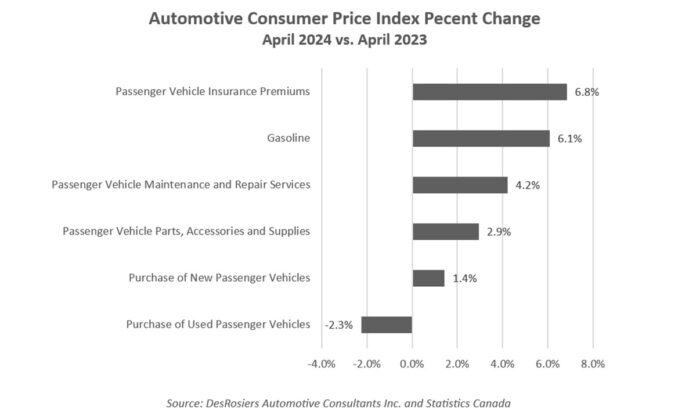“Prices on the Rise in the Auto Sector: An Overview of the Recent Trends
The automotive industry is constantly evolving, with prices shifting and trends emerging. Recently, DesRosiers Automotive Consultants conducted a detailed analysis of the consumer price index data in key areas of the automotive sector, revealing some interesting insights.
Price Increases in Various Categories:
According to the findings, the month of April 2024 showcased a general trend of price increases in several key categories. Insurance premiums saw a significant surge of 6.8%, while gasoline prices experienced a 6.1% jump. Critical maintenance costs also spiked by 4.2%, with parts specifically rising by 2.9%. These numbers point towards a consistent upward trajectory in the automotive aftermarket, indicating a pattern of price inflation.
Divergent Trends in Vehicle Prices:
On the flip side, the story is different when it comes to vehicle prices. The consumer price index for new passenger vehicles saw a modest increase of 1.4% compared to the same period last year. However, used passenger vehicles witnessed a decline of 2.3% in their CPI, with DAC attributing this to the earlier surge in prices during the semiconductor shortage. Despite some relief for consumers in vehicle purchase costs, the overall expenses related to aftermarket services, fuel, and insurance are on the rise.
The Road Ahead:
Andrew King, Managing Partner at DAC, highlighted the ongoing challenges facing consumers in the auto sector. While there has been some moderation in vehicle prices, the increasing costs of aftermarket services, gasoline, and insurance remain a concern. As the industry navigates through a period of uncertainty, with the recent interest rate cuts by the Bank of Canada signaling a potential shift in economic dynamics, the future of the automotive market hangs in the balance.
Conclusion:
The fluctuations in prices across different segments of the auto industry reflect a complex interplay of factors, from supply chain disruptions to economic policies. As consumers grapple with rising expenses, it becomes crucial for stakeholders in the automotive sector to adapt to these changing dynamics. The key lies in fostering resilience and innovation to ensure a sustainable future for both businesses and consumers alike.”
Reference















